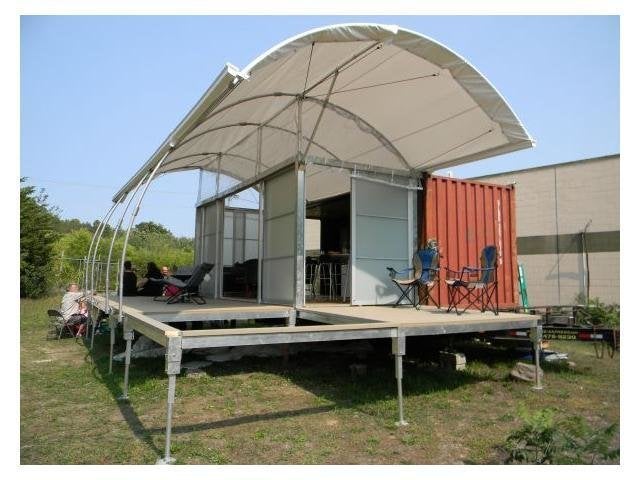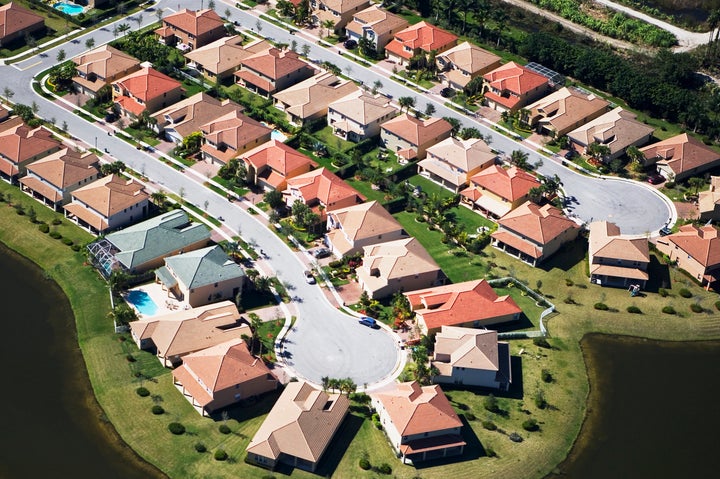
The massive, gaudy houses lining the streets of America’s upscale suburbs began to look like the epitome of bad taste and poor judgement once the foreclosure crisis hit. The writer behind the blog “McMansion Hell” tells why they’ll eventually be gone for good.
Kate Wagner, a 22-year-old getting her master’s degree in architectural acoustics at Johns Hopkins University in Baltimore, has been researching consumer trends in architecture since she was in high school. Her background knowledge has given her ammunition for “McMansion Hell,” which she started writing this summer. At first, she wrote for a few friends to let off steam about the houses she despises, but the blog quickly gained followers.
“There’s literally nothing that would convince me to live in a McMansion,” Wagner said. “I would rather donate it to a fire department to use for controlled burns.”
Wagner marks up real estate listing photos like a merciless English teacher. Her snarky but informative explanations of the problems with McMansions make architecture criticism accessible for people who aren’t experts.
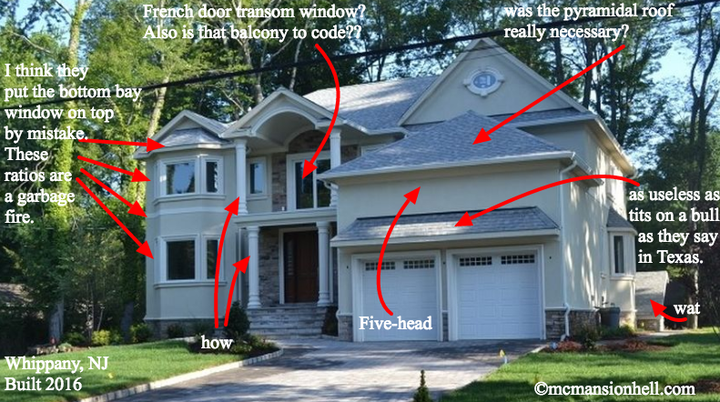
There’s no hard-and-fast definition of a McMansion, but Wagner has a long list of criteria. McMansions are oversized ― more than 3,000 square feet, with five or more bedrooms and a garage for three or more cars ― and typically too large for the size of their lot.
“One of the defining factors of the McMansion is this concept of waste and the proliferation of excess and … pushing this illusion of wealth,” Wagner said.
They’re also identified by poor craftsmanship, often covered in trendy but cheap materials like faux stonework. And they’re usually a jumble of styles from different periods, with out-of place columns and turrets, fake balconies, and windows that are a mix of shapes and sizes.
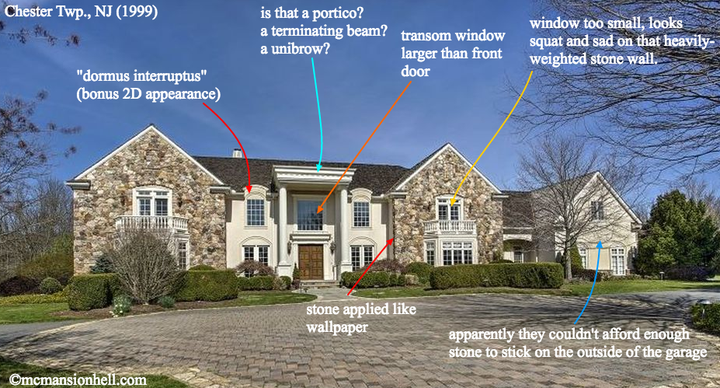
Some of the houses’ design flaws might not be obvious to most buyers, but that’s what Wagner is here for.
She breaks down the architecture principles that make houses look tacky, schooling readers on elements like “secondary masses” and “quoins.”
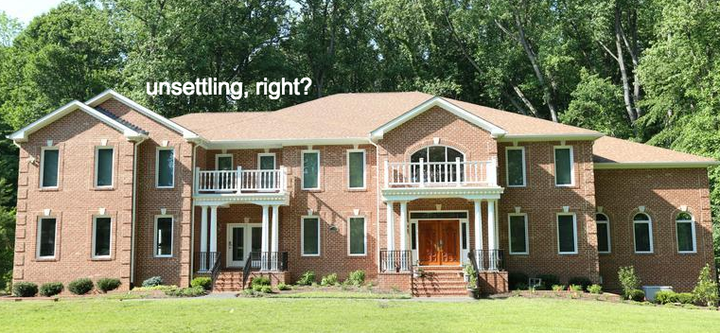
Wagner has invented irreverent terms to describe McMansion features, like “Palladian window bunker hell” and “roofline soup”: “when the roofline of the house is so chaotic and illogical, one is immediately sent into a spiraling descent of cringe.”
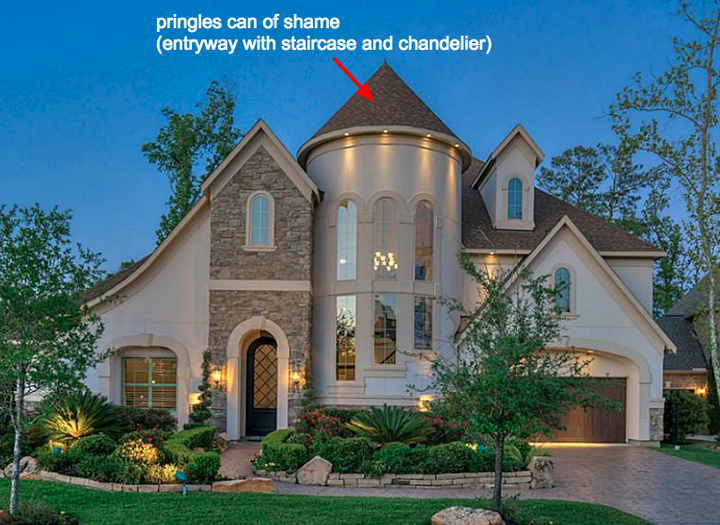
She doesn’t limit her scorn to exteriors.
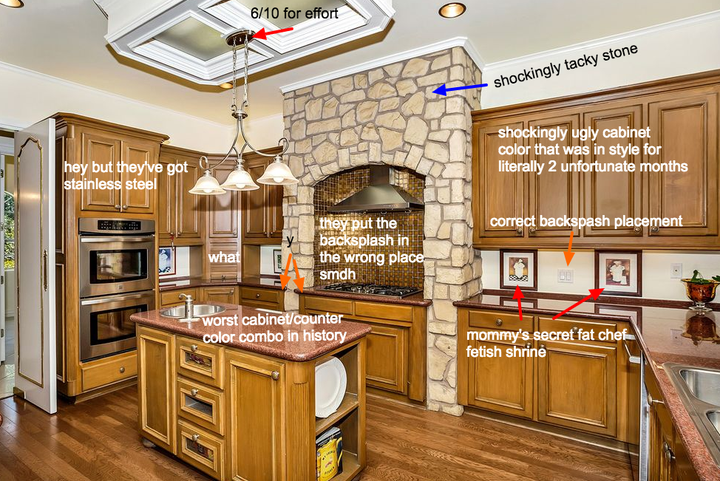
McMansions, first built in the 1980s, grew in size each decade leading up to the financial crisis. Then, people who’d sometimes spent millions on their personal palaces were left with homes worth only a fraction of what they’d paid, and often going into foreclosure. Neighborhoods full of McMansions emptied out, attracted squatters and, in at least a few cases, were cheap enough that groups of college students could rent them.
“After the recession, I think people took poorly to the houses because they [became] physical representations of the financial crisis,” Wagner said. “And they’re not recovering from that well, especially the older ones.”
Still, homeowners crave more space, and houses built last year were bigger than ever. With a median size of almost 2,500 square feet, the average home is 10 percent larger than at the height of the bubble a decade ago.
That’s partially because developers have catered to wealthy homebuyers rather than building smaller, more affordable houses as middle-class families struggled to re-enter the housing market. There’s also more profit to be made on luxury homes.
New houses may soon shrink, however. Homes built last quarter were actually a little smaller than those built in the last couple years.
And while older McMansions are still more expensive than most homes, the gap between their prices and the rest of the housing market is narrowing in most major metro areas, according to Bloomberg, making them questionable investments.
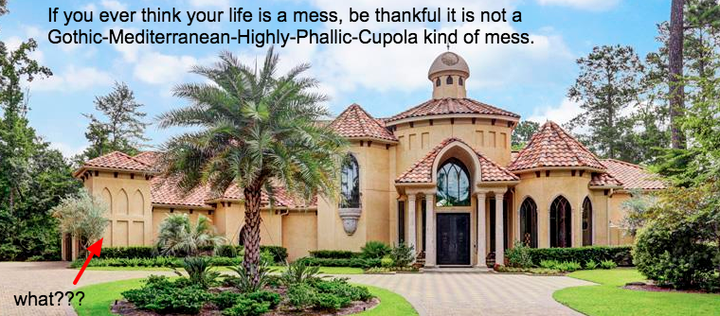
Wagner does more than ridicule tacky design. She argues that McMansions should be reviled because they’re bad for the environment, from the extra energy required for heat and electricity in such a large space, to the emissions from the production of construction materials.
In her ideal world, McMansions would eventually disappear as people traded sprawling suburbia for sustainability ― dense, walkable and diverse neighborhoods.
“People are starting to see that it’s a waste of money to build super trendy, huge houses,” Wagner said. “Hopefully, the blog will continue that discussion.”
_____

